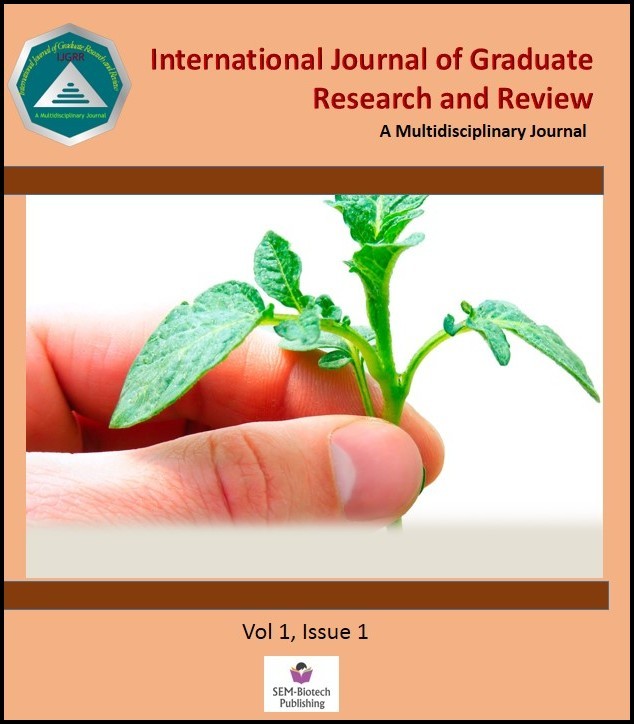





Evaluation and Selection of Different Management Practices of Ginger Rhizome Rot
Santosh Bharati*, Chudamani Pant, Sushma Paneru
Agriculture and Forestry University, Rampur, Chitwan
Santosh Bharati*, Chudamani Pant, Sushma Paneru
Agriculture and Forestry University, Rampur, Chitwan
Abstract
Ginger (Zingiber officinale Rosc.) is one of the commercial spice crop grown whose underground part Rhizome is used as spice. In Ginger, Rhizome rot is the most destructive disease that causes economic damage of 50-90% to the crop. Nepal is the 4th largest producer of Ginger but this disease limits the yield, productivity and marketable Rhizomes. Ginger Rhizome rot is a complex disease incited by more than 24 pathogens among them Pythium apahidermatum, Pythium myriotylum (11 sp. of Pythium), Fusarium oxysporum f. sp. zingiberi and Ralstonia solanacearam are the major pathogens. Application of systemic chemical pesticides such as Ridomil MZ (0.2%), Bavistin 0.1%, Apron 35 WS, Dithane M 45, Metalaxyl, Chlorox (10 %), Copper oxychloride 0.3% effectively control the disease but results in the serious risk in the human health and environmental hazards. Therefore, an alternative approach that are eco-friendly and economically viable effective management approach are developed. These approach includes improve cultural practices, physical method, Biological methods and Nano-technology that effectively control the soil as well as seed borne pathogens that causes Rhizome rot diseases. This review is aimed to discuss various effective disease management practices that are being developed from research innovations and methods practiced in different part of world.
Keywords: Ginger; Pythium; Rhizome rot; Trichoderma
Ginger (Zingiber officinale Rosc.) is one of the commercial spice crop grown whose underground part Rhizome is used as spice. In Ginger, Rhizome rot is the most destructive disease that causes economic damage of 50-90% to the crop. Nepal is the 4th largest producer of Ginger but this disease limits the yield, productivity and marketable Rhizomes. Ginger Rhizome rot is a complex disease incited by more than 24 pathogens among them Pythium apahidermatum, Pythium myriotylum (11 sp. of Pythium), Fusarium oxysporum f. sp. zingiberi and Ralstonia solanacearam are the major pathogens. Application of systemic chemical pesticides such as Ridomil MZ (0.2%), Bavistin 0.1%, Apron 35 WS, Dithane M 45, Metalaxyl, Chlorox (10 %), Copper oxychloride 0.3% effectively control the disease but results in the serious risk in the human health and environmental hazards. Therefore, an alternative approach that are eco-friendly and economically viable effective management approach are developed. These approach includes improve cultural practices, physical method, Biological methods and Nano-technology that effectively control the soil as well as seed borne pathogens that causes Rhizome rot diseases. This review is aimed to discuss various effective disease management practices that are being developed from research innovations and methods practiced in different part of world.
Keywords: Ginger; Pythium; Rhizome rot; Trichoderma
Full text: PDF
Int. J. Grad. Res. Rev.Vol-5, Issue-2: 131-134



